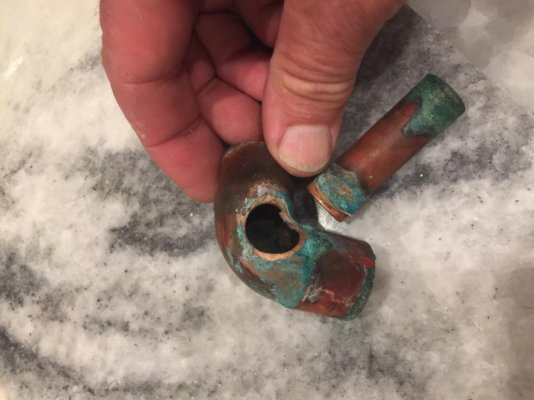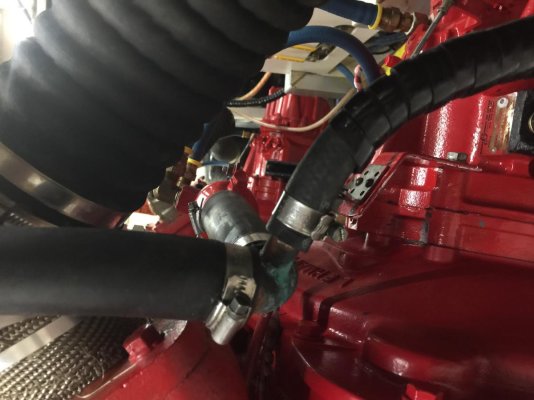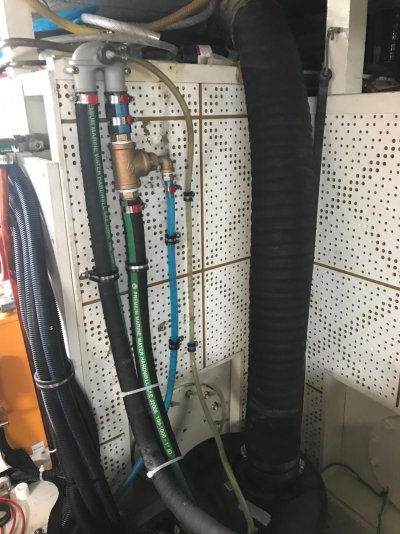firstbase
Guru
- Joined
- Nov 6, 2016
- Messages
- 1,644
- Location
- United States
- Vessel Name
- Black Eyed Susan
- Vessel Make
- Grand Banks 42' Classic
Finished flush the RW side of my Ford Lehman SP 135 starboard engine tonight. Put it all back together and started the engine to flush it out. After a few minutes checked the engine room and a found a big leak coming out of a fitting, see below pic. This fitting is after the trans cooler. Hose goes from the end of the trans cooler to this and then off to wherever it goes to (not too knowledgeable yet!). Simple three way copper..elbow.. I guess you call it. Can't find the part in the engine manual. Need to replace of course and if the starboard one went how far behind can the one on the port engine be? I guess American diesel will know what it is.
BUT....when I saw the leak I went to shut down the engine and it wouldn't stop. Never had that before. No way are these two associated. I mean could the water leak have gotten the stop solenoid wet or something? I pushed the stop cable or whatever you call THAT and it shut down but....clueless on this. Any comments on the elbow piece below of the non-stopping appreciated!
BUT....when I saw the leak I went to shut down the engine and it wouldn't stop. Never had that before. No way are these two associated. I mean could the water leak have gotten the stop solenoid wet or something? I pushed the stop cable or whatever you call THAT and it shut down but....clueless on this. Any comments on the elbow piece below of the non-stopping appreciated!



